It was a bright and sunny day at Semakau last Sunday!
We had a total of 21 participants. Danwei had the biggest group (Clownfish) and he had Lahiru to help him, while Helen (Sea Star) and I (Turtle) got smaller groups. Samson, Robert and of course Luan Keng were the hunter-seekers for the day. We gathered at West Coast Pier before taking a 30 minute boat ride to Semakau Landfill.
After the video presentation by NEA, Samson was arrowed to do the landfill tour, and he did a really good job too :)
This walk was yet another spectacular and fruitful one. We saw the usual hermit crabs and mangrove trees at the mangrove area, and when we reached the sandy area just before entering the seagrass lagoon, a sprinkle of stars greeted us.
They were the common sea stars (Archaster typicus). Not only did we find many of the usual ones with five arms, we found one with four arms, and another with six arms (see below) as well.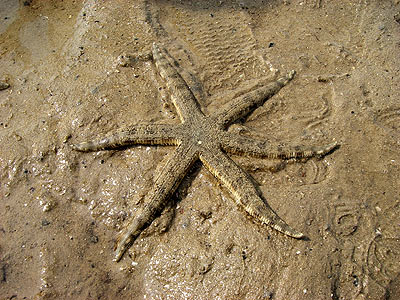
While crossing the seagrass lagoon, we saw the "resident" humongous synaptid sea cucumber (Family Synaptidae) again! We usually found it around the same spot in the seagrass lagoon.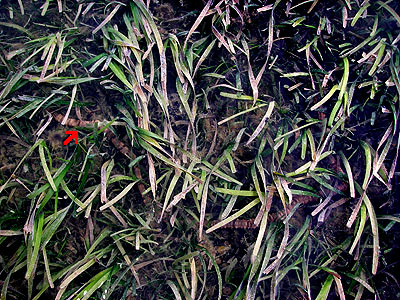
Just look at where the red arrow is pointing above. Just compare it to the tape seagarss (Enhalus acoroides)! This sea cucumber was easily more than two metres long! And below, we have a close up of its front end and feeding tentacles. Synaptid sea cucumber are deposit feeders which lash their tentacles around to collect edible particles.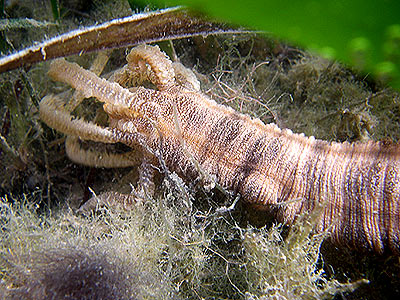
We saw several other species of sea cucumbers, including the sandfish sea cucumber below (Holothuria scabra).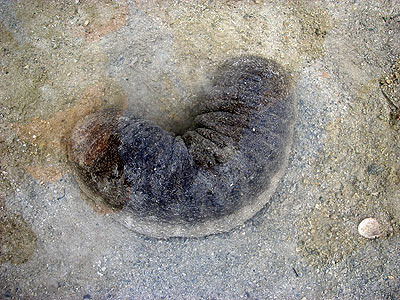
We have seen a number of warty sea cucumbers on several of our trips, but were not really sure if they were of the same species. Some of those we had seen appeared more thorny than warty, and the colours were different. Hopefully some sea cucumber experts can advise on the species below if he/she read this :)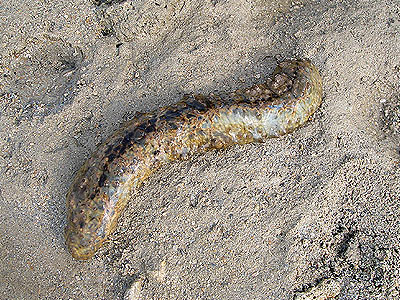
We also found a few stonefish sea cucumber (Actinopyga lecanora).
We also found several species of nudibranchs, including the Ceratosoma sinuata on below left and the Discodoris boholensis on the right.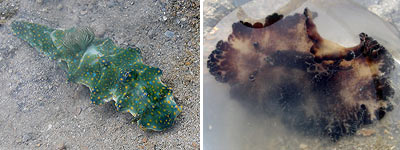
"Nudibranch" actually means "naked gills". For the two species above, you can see the flowery gills on their backs. To protect themselves, some nudibranchs secrete distasteful substances and even toxins.
We also found a cute little hermit crab. Looks like a striped hermit crab (Clibanarius sp.) to me.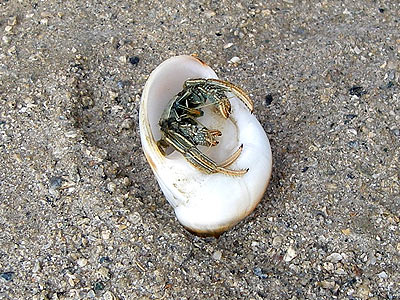
We have been seeing a number of long-spine sea urchins (Diadema setosum) recently. This sea urchin species has an orange rim on its anal cone.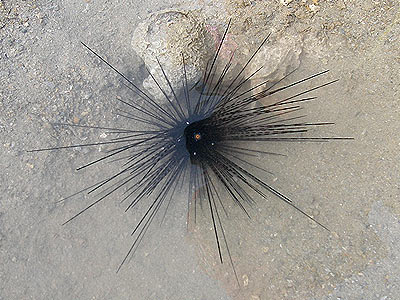
For the past few walks, we had several sightings of the upside-down jellyfish (Cassiopea sp.) as well. However, the one we saw this time round has a different colour - its kind of brownish orange rather than dark green. The shape of the tentacles and the patterns on its top looked the same though. This jellyfish usually remains in an upside-down position as it has symbiotic algae, mostly in its tentacles, which photosynthesises better with it being upside-down.
We also saw several lovely fanworms (Family Sabellidae).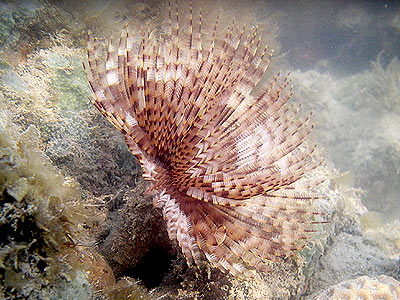
These worms live in flexible, leathery tubes. The feathery fan that we see is stuck on the top of the worm's head.
Other worms we saw include the five-striped ribbon worm (Baseodiscus quinquelineatus).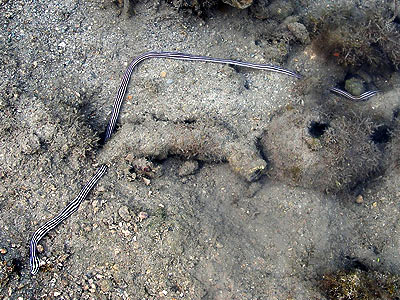
While they appear soft and defenceless, in actual fact they are fierce predators. Studies also suggest that many ribbon worms harbour bacteria that produce powerful toxins that may make them toxic to eat.
We also found a noble volute (Cymbiola nobilis).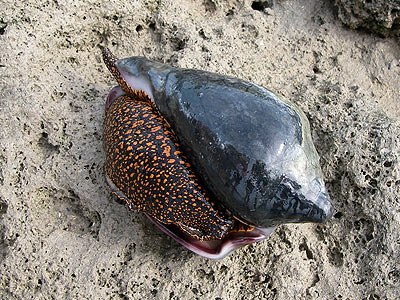
Just look at its beautiful foot with the bright orange spots!
We also found a few spider conches (Lambis lambis).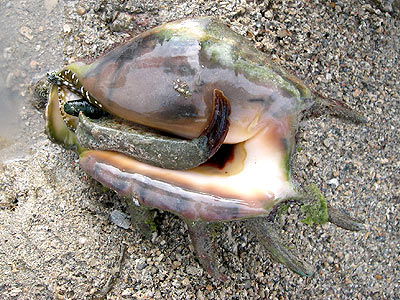
And once again, we found a heart cockle (Corculum cardissa).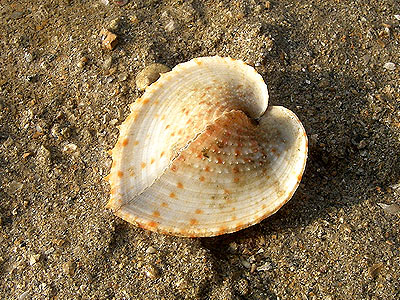
Unlike most other clams which have their valves flatten like plates, this clam has its opening of the valves cutting across the centre of the 'heart'.
We also found a living scallop!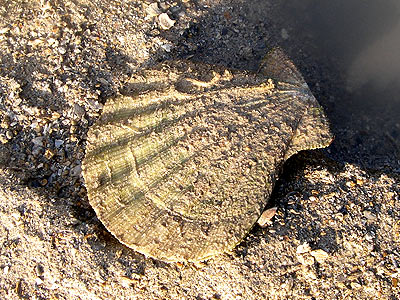
Scallops can 'swim' by flapping their valves.
We also saw lots of soft corals and hard corals, inlcuding this sunflower mushroom coral (Heliofungia actiniformis) below.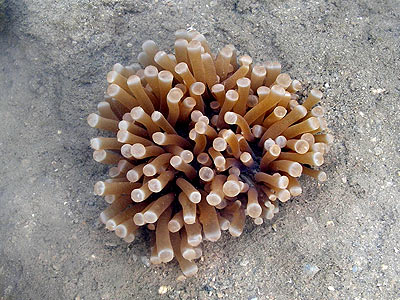
And for the third time during the intertidal walks, we found this huge cushion star (Culcita novaeguineae)! Cushion stars feed on corals.
And of course, a Semakau trip will be incomplete without having a group shot with the knobbly sea star (Protoreaster nodosus).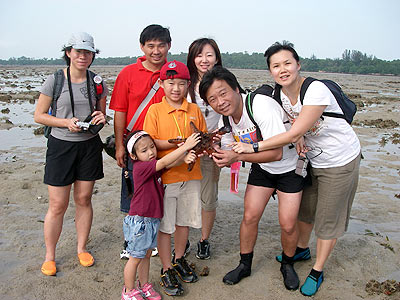
This is my group - the Turtles!
See also:
Samson's account of the trip with more photos!
Tuesday, March 20, 2007
Semakau Walk on 18 March 2007
Subscribe to:
Post Comments (Atom)

5 comments:
Hi Ron,
Where did you find the heart cockle? Been trying to find it but did not manage to see it.
Found it half buried in the sand in one of the tidal pools nearer to the coral rubble actually. Guess I've seen it before, so it's easier for me to spot it :)
Hi Uncle Ron,
I think it's better to call you Uncle Ron than Ron, right?
Great findings! Gee, you put all our faces in (*_^)!
I put some photos on my blogs too, but a little blur.
Thanks Leshon. Have visited your blog :) It's been a great pleasure guiding your family. It's always great to have nature lovers like your family on our walks. You have been a great audience :)
Hi Ron, always a delight reading your blog. Hopefully tomorrow we can see the many things you have seen with your group.
After a long siesta, this will be my first foray into Semakau for 2007.
Attempting to blog, visit
http://mountan-n-sea2.blogspot.com/
Post a Comment